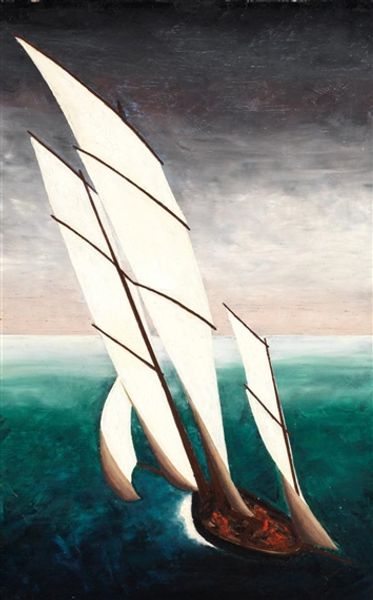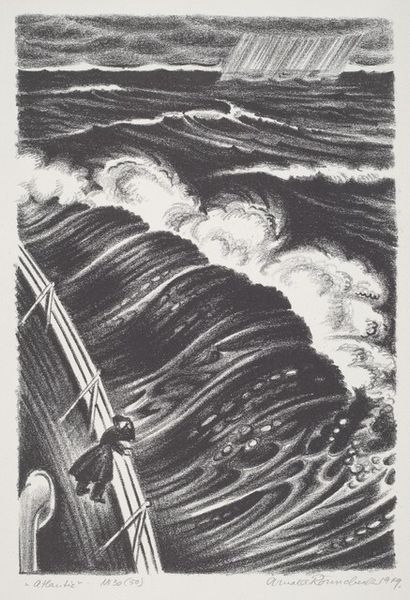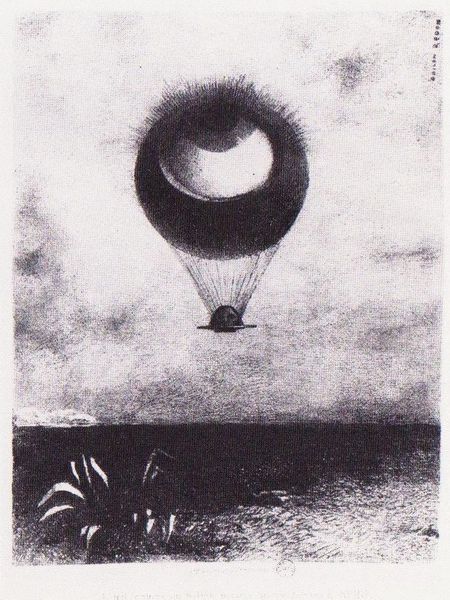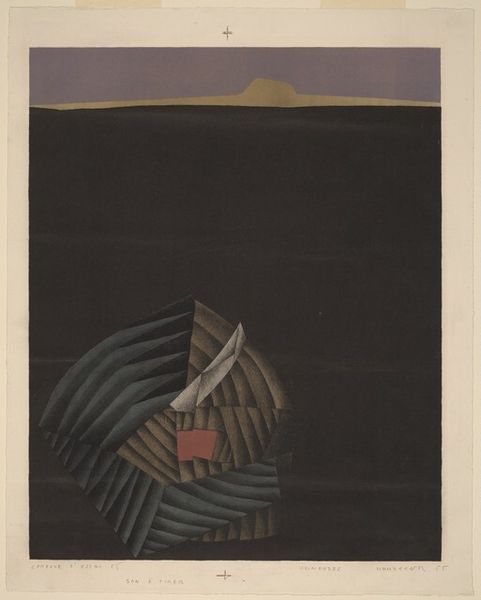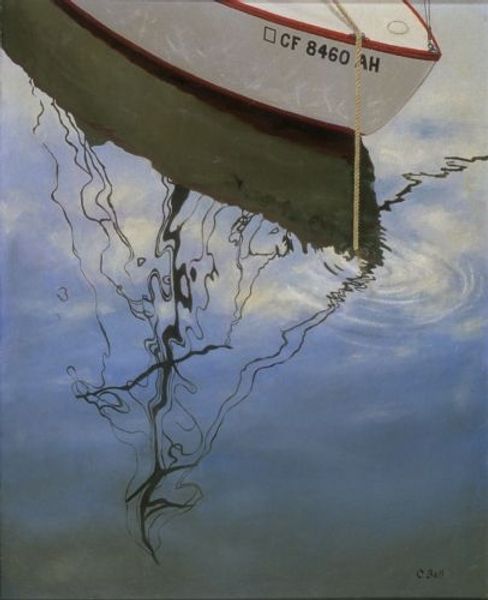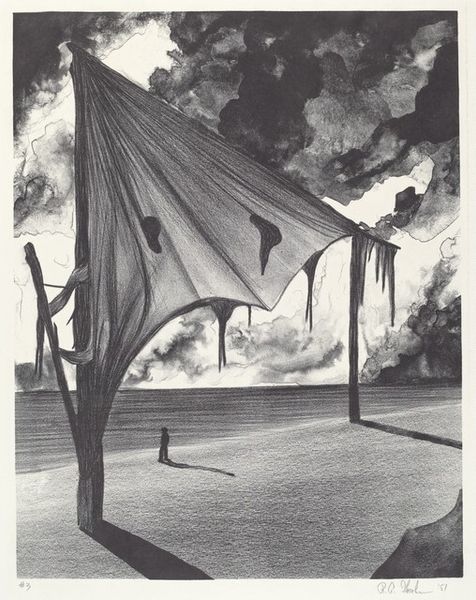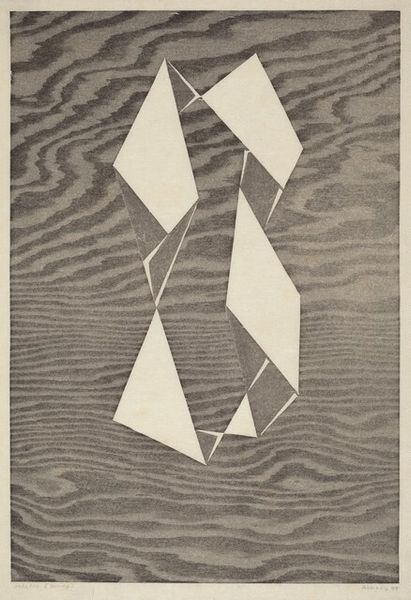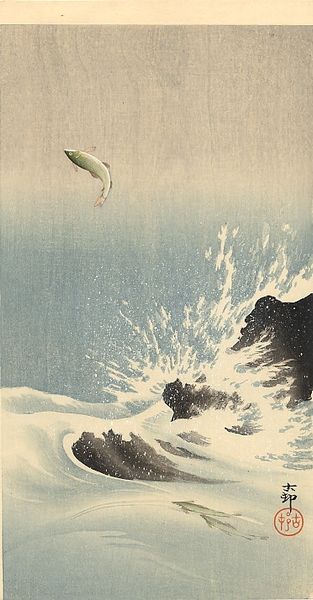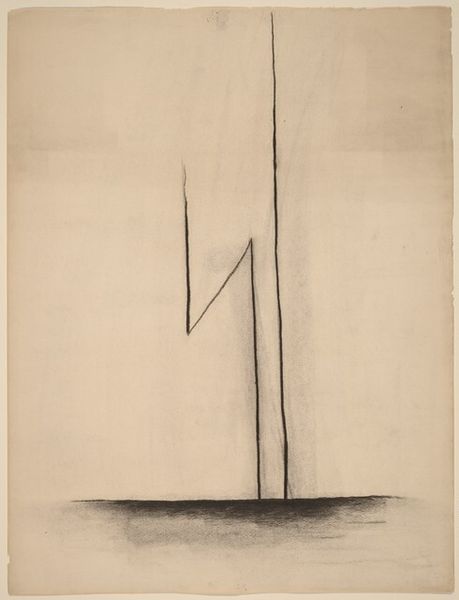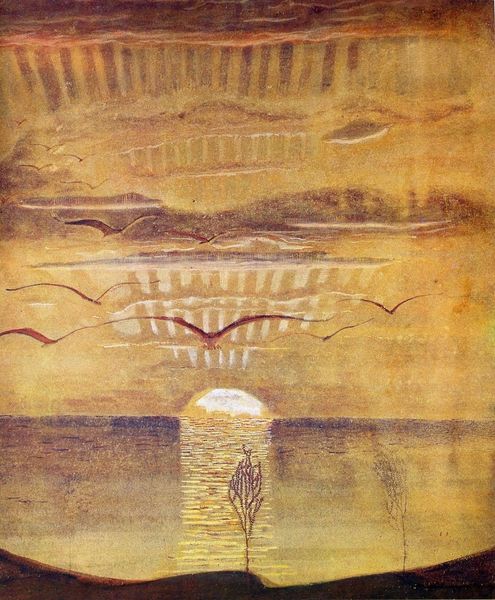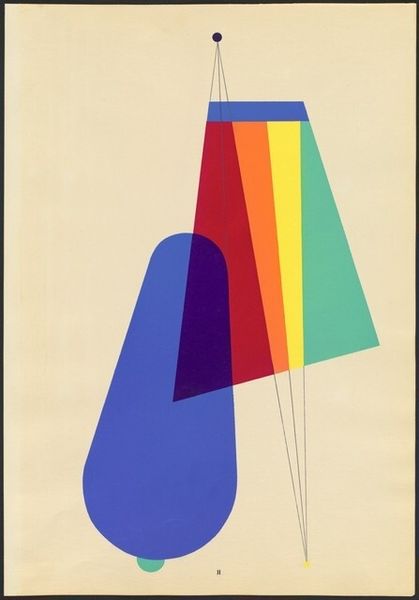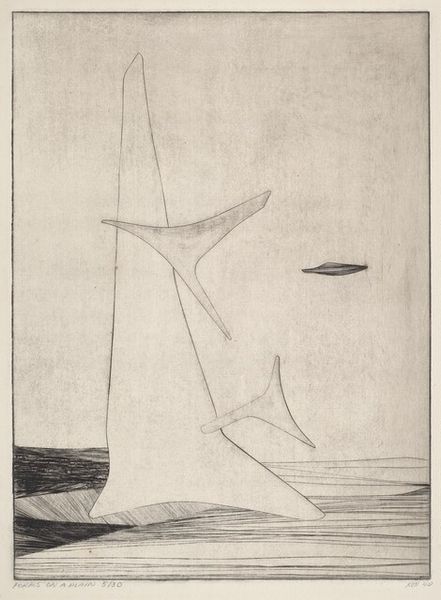
painting, oil-paint, watercolor
#
sky
#
painting
#
oil-paint
#
landscape
#
handmade artwork painting
#
oil painting
#
watercolor
#
watercolour illustration
#
surrealist
#
surrealism
#
portrait art
#
watercolor
#
sea
Copyright: Francesco Clemente,Fair Use
Curator: At first glance, there’s a sense of serene otherworldliness about this painting. It's unsettling, but quiet. Editor: That's quite apt. We’re looking at Francesco Clemente’s "Two Horizons, A Thousand," crafted in 1978. It seems to be an oil and watercolour painting, rendered with striking simplicity, which gives the piece that strange effect. Curator: The most prominent image is a stylized form, suspended over the ocean. I find the shape very intriguing, it almost seems biomorphic or dreamlike. What cultural associations might Clemente be tapping into here? Editor: Given the prevalence of ocean imagery in various cultures, it evokes an array of symbolic potentials – journeys, the subconscious, transitions. Perhaps this is how Clemente visualizes personal thresholds. What do you see in the context of art history? Curator: The ethereal, floating object juxtaposed with the realism of the sea reminds me a little of Magritte and the surrealists' juxtaposition of familiar objects in unexpected spaces, distorting the ordinary. This tension between dream and reality is key, wouldn't you say? Editor: Absolutely, and it’s made potent through the handling of light. Note how the single line representing the water acts as an umbilical cord – or an opening perhaps – directly feeding the object and reflecting the luminosity from above. The ocean itself is rendered dark and undulating. Curator: And if the line connecting the object and sea represents life, what kind of statement could Clemente be making by depicting this peculiar entity sustained by it? Is it a commentary on dependency? Transformation? The unknown source of things? Editor: Interpreting its cultural value at this moment is particularly complicated. It reminds me of Cold War-era anxieties regarding isolation and a certain surreal dread towards nature. Though given Clemente’s trajectory later, it seems aligned with an aesthetic that celebrates interiority and an inner mythology that defies traditional Western values. Curator: It gives a window into how symbolic art forms can transcend time. His work presents these dreamlike connections that still reverberate with contemporary feeling and cultural meaning, Editor: Yes, these visual associations invite dialogue between past and present viewers. A really fascinating encounter, wouldn't you agree?
Comments
No comments
Be the first to comment and join the conversation on the ultimate creative platform.
